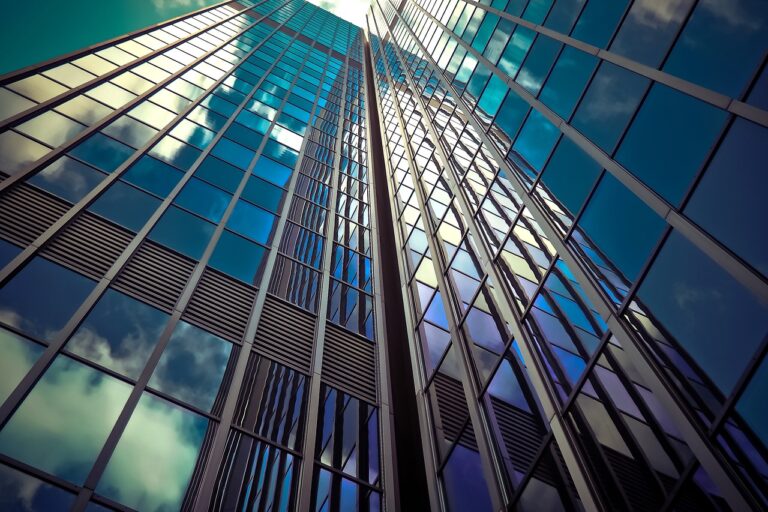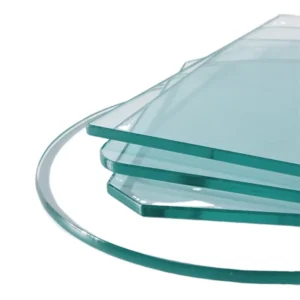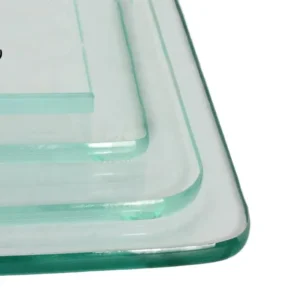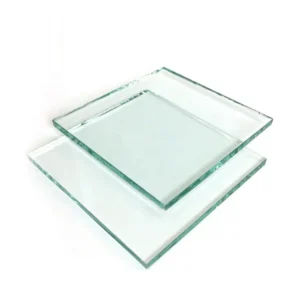Glass is commonly used in daily life, and there are many materials of glass.
Tempered glass and heat-resistant glass are also two common types.
Many people want to know the difference between them, so that they can do better The choice of toughened glass and heat-resistant glass, then the following specially introduces the difference between tempered glass and heat-resistant glass, some people are particularly curious, why tempered glass is so popular with people, then let’s take a look at the advantages of tempered glass.

The difference between tempered glass and heat-resistant glass?
a. Different uses of tempered glass are widely used in construction, decoration, automobile manufacturing industry (doors and windows, curtain walls, interior decoration, etc.), furniture manufacturing industry (furniture matching, etc.), home appliance manufacturing industry (television, oven, air conditioner, refrigerator, etc.) product). Heat-resistant glass is mainly used in the daily necessities industry (heat-resistant glass fresh-keeping boxes, heat-resistant glass tableware, etc.), medical industry (mostly used in medical ampoules, experimental beakers).
b. Different effects of temperature changes Heat-resistant glass is a kind of glass with strong thermal shock resistance (can withstand rapid cooling and rapid heating temperature changes, small thermal expansion coefficient), high temperature (high strain temperature and softening temperature), so it can be used in ovens and microwave ovens. In, it is safe to use even when the temperature changes suddenly. Tempered glass may burst after a sudden temperature change in the microwave oven. In the process of making tempered glass, because of the “nickel sulfide” inside, the glass will expand with the change of time and temperature, and there is a possibility of self-explosion. Completely unusable in the oven.
c. Different breaking methods When the heat-resistant glass is broken, it will produce cracks and will not fly away. Heat-resistant glass does not have the danger of self-explosion due to nickel sulfide, because heat-resistant glass cools slowly, and there is no condensation energy inside the glass, so it will not fly away when broken. When tempered glass breaks, it will burst and fly apart. During the tempering process of tempered glass, the inside of the glass forms prestress and condenses energy, so when it is damaged or self-exploded, the condensed energy will be released, forming fragments and flying, and at the same time, an explosion sound will be generated.

1. Tempered glass
Toughened glass, glass with compressive stress on the surface, also known as tempered glass, is strengthened by tempering method. It started in France in 1874.
Toughened glass belongs to safety glass. Toughened glass is actually a kind of prestressed glass. In order to improve the strength of glass, usually Using chemical or physical methods, compressive stress is formed on the glass surface.
When the glass is subjected to external forces, the surface stress is first offset, thereby improving the bearing capacity and enhancing the glass’s own resistance to wind pressure, cold and heat, and impact. Pay attention to distinguish it from FRP.
2. Advantages
Tempered glass is actually a kind of prestressed glass. In order to improve the strength of glass, chemical or physical methods are usually used to form compressive stress on the glass surface. Compressive strength, tempered glass has two main advantages:
1. High strength: the strength is several times that of ordinary glass. The treated surface of the glass produces uniform stress, which increases the mechanical strength and stability of the glass. Its strength is 3-10 times that of the glass that has been well annealed. The impact resistance is also greatly improved. The bending strength is 3-5 times that of ordinary glass, and the impact strength is 5-10 times that of ordinary glass. While improving the strength, it also improves safety.
The bending strength of tempered glass is higher than that of ordinary glass. 4-5 times that of tempered glass with a thickness of 5mm, the bending strength can generally reach 152Mpa, the impact strength is about 1.53-3 times that of ordinary glass in China, and about 4 times that of ordinary glass in foreign countries, such as 227g tempered glass style (300* 300*5mm) free fall from a height of 2.5-3m above the center without breaking, while ordinary glass is broken below 1m, the deflection of tempered glass is 3-4 times larger than that of ordinary glass, a piece of tempered glass of 1200*350*6mm, the largest bending The thickness reaches 100mm, tempered glass has a certain water resistance strength, and the test piece of 400*600*6mmde is 1-2.8kg/cm2.
2. Safety in use: The increase of its bearing capacity improves its fragility. When the glass is damaged by external force, reticular cracks will appear, and the fragments will form obtuse-angled small particles similar to honeycomb shapes, which are not easy to cause serious damage to the human body. Therefore, It’s called safety glass.
3. Thermal stability: Tempered glass is 2-3 times more resistant to rapid cooling and rapid heat than ordinary glass. Generally, it can withstand a temperature difference of more than 150LC, which has an obvious effect on preventing thermal cracking.
Good thermal shock resistance, the maximum safe working temperature is 287.87, and can withstand the temperature difference of 204.44, so it can be used to manufacture observation windows on high-temperature furnace doors, radiant gas and dryers, etc. Thermal stability refers to the ability of glass to withstand severe temperature changes without damage. Tempered glass can withstand sudden temperature changes in the range of 250-320OC, while ordinary glass is only 70-100OC. For example, tempered glass (510*310*6mm) is placed at 0OC, poured with molten lead water (327.5OC) without breaking.

3. Product application
Products are widely used in high-rise building doors and windows, glass curtain walls, indoor partition glass, lighting ceilings, sightseeing elevator passages, furniture, glass guardrails, etc. Usually tempered glass can be applied in the following industries:
1. Construction, construction formwork, decoration industry (eg: doors and windows, curtain walls, interior decoration, etc.)
2. Furniture manufacturing industry (glass tea table, furniture accessories, etc.)
3. Household appliance manufacturing industry (TV, oven, air conditioner, refrigerator, etc.)
4. Electronics and instrumentation industries (mobile phones, MP3, MP4 clocks and other digital products
5. Automobile manufacturing industry (automobile windshield, etc.)
6. Daily products industry (glass cutting board, etc.)
7. Special industries (military glass)

4. Development prospects
In the future construction industry, the market value of tempered glass will still increase.
Due to the regulations of building regulations and the improvement of modern people’s awareness of safety, the application of a series of safety glasses such as tempered glass has been promoted.
The single tempered glass The phenomenon of self-explosion is unavoidable, whether it is the early processing of ordinary glass or float glass (selection of the original glass), or the secondary heat treatment in the later stage, the possibility of self-explosion cannot be completely ruled out. With the continuous development of equipment and the continuous updating of equipment, tempered glass may be able to break the conclusion of self-explosion. At that time, tempered glass is no longer “safety glass” in name, and its application range will also expand.

Low-iron toughened suede glass (also known as white glass) with a thickness of 3.2mm has a light transmittance of over 91% within the wavelength range (320-1100nm) of the solar cell’s spectral response, and has a relatively high performance for infrared light greater than 1200 nm. High reflectivity. At the same time, the glass can withstand the radiation of the sun’s ultraviolet rays, and the light transmittance does not decrease.
Tempered glass used as packaging material for photovoltaic modules has high requirements for the following performance:
a). Mechanical impact strength
b). Surface light transmission
c). Curvature
d). Appearance
Tempered glass is a secondary processing product of flat glass. The processing of tempered glass can be divided into physical tempering method and chemical tempering method. Physically tempered glass is also called tempered tempered glass (heat the metal workpiece to a certain temperature and keep it for a period of time, and then immerse it in the quenching medium for rapid cooling).
This kind of glass is in a stress state of internal tension and external compression. Once the local damage occurs, the stress will be released, and the glass will be broken into countless small pieces. These small pieces have no sharp edges and corners and are not easy to hurt people. Chemically tempered glass is to improve the strength of glass by changing the chemical composition of the glass surface, generally by applying ion exchange method for tempering. The effect is similar to physically tempered glass.
The strength of tempered glass is several times higher than that of ordinary glass, the bending strength is 3-5 times that of ordinary glass, and the impact strength is 5-10 times that of ordinary glass. Increased strength also improves safety. The toughened glass has a large bearing capacity and improves its fragility.
Even if the toughened glass is broken, it will appear as small fragments without sharp angles, which greatly reduces the harm to the human body. The rapid cooling and heat resistance of tempered glass is 2-3 times higher than that of ordinary glass, which has obvious effects on preventing thermal cracking.
Tempered glass has good thermal stability, and can withstand a temperature difference that is three times that of ordinary glass, and can withstand a temperature difference of 200°C. However, the tempered glass can no longer be cut or processed, and the glass can only be processed to the required shape before tempering, and then tempered.
